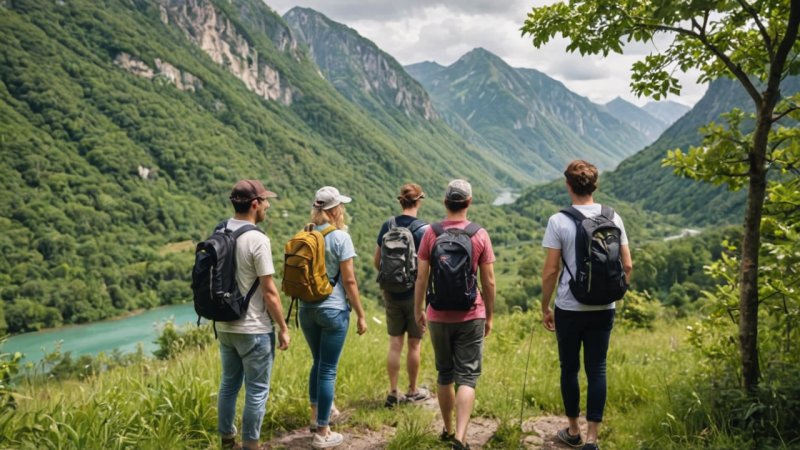Traveling as a group can be an enriching experience, offering opportunities for bonding, adventure, and new discoveries. However, with the growing awareness of environmental issues and the impact of tourism on local communities, planning a sustainable group trip has become more important than ever. This guide will explore the essential steps and considerations for organizing a trip that prioritizes sustainability, ensuring that your group can enjoy their travels while minimizing their ecological footprint.
Understanding Sustainable Travel
Sustainable travel refers to the practice of traveling in a way that conserves resources, minimizes environmental impact, and promotes cultural integrity. It involves making conscious choices throughout your journey, from transportation and accommodation to activities and food. As a group, it is vital to establish a common understanding of what sustainable travel means and set goals for your trip.
Defining Your Goals
Before diving into the planning process, gather your group to discuss your travel goals. Consider the following questions:
- What are your group's values regarding sustainability?
- Do you want to focus on minimizing carbon emissions, supporting local economies, or protecting wildlife?
- What type of experiences are you seeking? Adventure, relaxation, cultural immersion?
By defining your goals, you can build a trip that aligns with your values and enhances the overall experience.
Choosing a Destination
The destination plays a crucial role in sustainable travel. Some locations are more eco-friendly than others, either due to their sustainable practices or the natural resources they offer. Here are some tips for choosing a destination:
Research Sustainable Destinations
Look for places that prioritize sustainability in their tourism practices. Many countries and cities have become leaders in eco-friendly travel, offering green hotels, sustainable tours, and conservation programs. Resources like the Global Sustainable Tourism Council (GSTC) can help you identify destinations that adhere to sustainability standards.
Consider Proximity
Choosing a destination that is closer to home can significantly reduce your group's carbon footprint. Shortening travel distances or opting for overland travel can be more sustainable than flying. Consider local destinations or regional getaways that still offer unique experiences.
Transportation Options
Transportation is a major contributor to a trip's environmental impact. When planning a sustainable group trip, consider the following transportation options:
Public Transport
Utilizing public transport, such as buses or trains, can drastically reduce emissions compared to individual car travel or flights. Research local public transport options at your destination and incorporate them into your itinerary.
Carpooling or Group Transportation
If public transport is not an option, consider renting a vehicle that accommodates your entire group. Opt for fuel-efficient or hybrid vehicles to lessen your impact. If possible, share rides with other travelers to further reduce emissions.
Biking or Walking
Once at your destination, encourage your group to explore on foot or by bike. Many destinations offer bike rentals or guided walking tours, allowing you to experience the local culture while reducing your carbon footprint.
Accommodations that Support Sustainability
Where you choose to stay can significantly impact your trip's sustainability. Here are factors to consider when selecting accommodations:
Look for Eco-Friendly Certifications
Seek hotels, hostels, or lodges with eco-friendly certifications such as LEED, Green Key, or EarthCheck. These accommodations often implement sustainable practices like energy conservation, water-saving measures, and waste reduction.
Support Local Businesses
Choose to stay in locally-owned guesthouses or bed-and-breakfasts to support the local economy. Not only does this create a more authentic experience, but it also ensures that your money contributes to the community.
Consider Group Lodging Options
Look for eco-friendly vacation rentals or eco-lodges that can accommodate your entire group. This option may provide more flexibility and opportunities for communal activities while reducing individual resource consumption.
Activities and Experiences
When planning activities for your group, aim to choose experiences that promote sustainability and cultural exchange:
Engage in Eco-Tourism
Consider activities such as guided nature tours, wildlife conservation programs, or volunteering for local environmental initiatives. Eco-tourism allows your group to enjoy the beauty of nature while supporting conservation efforts.
Support Local Culture
Choose activities that immerse your group in local culture, such as cooking classes, artisan workshops, or cultural performances. This helps promote cultural appreciation and generates income for local artisans and performers.
Limit Activities with High Environmental Impact
Be mindful of activities that may harm the environment, such as off-road excursions or interactions with wildlife that exploit animals for profit. Research activities beforehand to ensure they align with your sustainability goals.
Dining with Sustainability in Mind
Food is an integral part of travel, and dining choices can significantly impact sustainability:
Prioritize Local and Organic Options
Encourage your group to eat at local restaurants that prioritize farm-to-table practices. This supports local farmers and reduces the carbon footprint associated with transporting food over long distances.
Practice Mindful Eating
Be mindful of food waste during your trip. Encourage your group to order only what they can eat and consider sharing dishes to minimize waste. Supporting restaurants with sustainable practices can also help reduce your overall impact.
Participate in Culinary Experiences
Consider taking a cooking class or food tour that focuses on local ingredients and traditional methods. Not only does this provide a unique experience, but it also fosters appreciation for the local culinary heritage.
Staying Conscious of Your Impact
Throughout your trip, it's essential to remain aware of your group's impact on the environment and local culture:
Educate and Communicate
Keep the lines of communication open within your group regarding sustainability. Share tips and reminders about reducing waste, conserving resources, and respecting local customs.
Practice Leave No Trace Principles
Adopt the Leave No Trace principles to minimize your environmental impact. This includes disposing of waste properly, leaving natural and cultural sites as you found them, and respecting wildlife.
Reflecting on Your Sustainable Journey
After returning from your trip, take some time to reflect on the experience:
Share Your Stories
Encourage group members to share their favorite moments and lessons learned regarding sustainability. This can foster a deeper appreciation for your shared experiences and inspire future travels.
Consider Future Sustainability Goals
Reflect on how your group can continue to promote sustainable practices in your daily lives and future travels. Consider discussing new travel goals or commitments for your next adventure.
Conclusion
Planning a sustainable group trip requires thoughtful consideration at every stage, from choosing a destination to engaging in eco-friendly activities. By prioritizing sustainability, your group can enjoy fulfilling travel experiences while minimizing your impact on the planet. With clear goals and a commitment to responsible travel practices, your next adventure can be both memorable and sustainable. Travel with purpose, and let your journey inspire others to follow suit.






